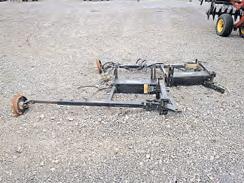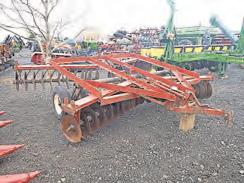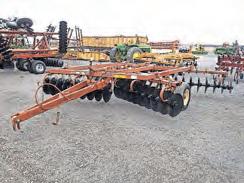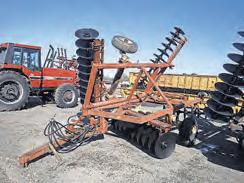
12 minute read
Build a team of trusted
Data from point-of-purchase scanner data on meat purchases show a 100% in crease in pork sales from a year ago, a 90% increase in beef sales for the week ending March 22, and they have since fallen off.
“So, that peak demand buying, stocking up phase where people were wor ried about mobility and whether there was going to be enough has really lev eled off and we’re at maybe 30% to 40% higher sales in grocery stores than what we were seeing the same time last year,” Lusk said.
“Sales at supermarkets on net are up a bit, but there are some cate gories that are up a lot. Online grocery spending increased nearly 80%. Gaming has increased (by about 75%). Food delivery sales are up about 50%.
“Also, a lot of things have taken a hit. Fast-food spending is down about 30%, and there’s been a cratering of sales in movie theaters and airlines. So, there have been widely dif ferent impacts throughout our food economy.”
SUPPLY CHAIN SHIFT
Another question that Lusk has heard is since restaurants are closed or have limited curb service, why not just move that food over from that system to grocery stores.
“We could do that in some cases, but in many cases it’s a lot more compli cated than just that. There are some real constraints in the system that some times prevents us from just switching from one supply chain to another. Some of that is regulatory,” he said.
“One example, there have been cases on the farm side is milk having to be dumped on the field. So, there’s surplus on the farm side, but then scarcity on the retail side. That seems paradoxical until you real ize there are people in the middle. There are proces sors that have to move that milk through the system. Then we have to think about how we consume milk and dairy products away from home.
“One of the big markets that were shut down was schools. Children drink milk at schools from those little cartons. That’s very different than the gallon jugs we buy at the grocery store.”
Another example is cheese. A restaurant may buy 50-pound blocks or 40- or 50-pound bags of shredded cheese for making pizza. Grocery stores sell half-pound bags of cheese.
“The processing plants that deliver food away from the home market have capital invested in filling those small milk containers for schools or creating those big blocks of cheese and it’s not like they can flip a switch and suddenly start cranking out gallon jugs,” Lusk explained.
“This same story played itself out to different extents in different markets around the country and some of the price fluctuations and stocking out that we saw was related to these capital investments. We have processors that are geared and have capital designed to deliver to a very specific system.”
PRICES, DEMAND
Food prices reflect demand and increased, but are now leveling off.
The wholesale meat prices generally mirrored that stocking up phase that consumers experienced. There were increases in beef and pork prices in mid-March, but then it began leveling off.
“Wholesale chicken prices increased, but curiously prices have been lower for chicken now than was the case last year, and that’s true for pork, as well, and beef is approaching 2019 prices,” Lusk said.
“So, in aggregate, at least at this moment, we’re not as worse off in terms of scarcity on the consumer side of things than we were this time last year.”
Egg prices are an exception having hard tripled in week.
“In some of the supply chain logistics shell eggs that go into restaurants typically get sold on big pallets and you from an asset in materials perspective you need more of the dozen case cartons to put those eggs in and there just wasn’t enough of that available,” Lusk said.
“There were also regulatory issues. Once eggs were labeled for sales to be packaged in those pallets to go to restaurants there were laws that prevented people from reselling those eggs into other markets. Some of those laws have been relaxed, but there’s been a combination of issues that have prevented the flow of products from one distribution system to another.”
VULNERABILITIES
While there is plenty of food in storage, Lusk pointed out some vulnerabilities in the processing system that could throw a wrench into the supply chain, particularly the meat packing industry.
The 15 largest pork packing plants in the country account for about 60% of all the hog processing capacity in the United States. Eleven of those plants are concentrated within a 300-mile radius of Des Moines, Iowa.
“The vulnerability to the shutdown at one or two of these plants is potentially high because these plants are large and at times that means they have economies of scale. They can efficiently process pork and get it to us in an affordable manner as consumers, but one of the potential downsides is if one of these plants has to shut down that could have aggregate impacts just given the size of these plants, and that’s what we’re starting to see,” Lusk said.
Three of those plants were closed down April 20 and a fourth was closed down one day for cleaning and that represented probably 10% or 15% of total U.S. pork processing capacity.
“Beef is similar. One statistic I’ve seen suggests that plants that slaughter at least 1 million head a year account for 56% of all U.S. cattle slaughter. We’ve seen some stories of plant closures there as well,” Lusk continued.
From a real numbers outlook, there were large cattle inventories going into 2020 and an increase in slaughter. However, few steers and heifers are now being slaughtered due to plant shutdowns or slowdowns. The daily cattle slaughter was 87,000 per day in mid-April compared to 114,286 per day 12 months ago.
The pork industry also saw large processing numbers early this year with the high inventory.
The April 20 pig slaughter number was about
370,000, reflecting the three or four plant closures. The daily slaughter number a year ago ran around 430,000.
“This is a really significant challenge for the production side of this. This is a close to just-in-time production system and you can slow down animals on feed, you could put cattle out to pasture,” Lusk said.
“It’s a little harder to do the same with hogs. You can slow them down a little bit, but at some point, and it’s disheartening to think about, are discussions of euthanasia or some other things. All the cards are kind of on the table. It’s really a concerning and distressing, mainly on the farm side of the equation.
“I think on the consumer side we’re not seeing big price run-ups yet, particularly for pork. We have these large inventories and storage at least for the moment, according to last month’s data. Hopefully, we’re going to be OK on the consumer
Illinois AgriNews is published weekly for $35 per year by AgriNews Publications, 420 Second St., La Salle, Ill. Periodicals postage is paid at La Salle, IL 61301. Postmaster: Send address changes to Illinois AgriNews, 420 Second St.,
La Salle, IL 61301.
Copyright 2020, AgriNews
Publications, Illinois AgriNews and Indiana AgriNews agricultural weekly newspapers. No part of these publications may be reproduced in any form or by any means, mechanical, photocopying, or otherwise, without the express written permission of AgriNews Publications. AGRINEWS
ILLINOIS EDITION USPS366-170 ISSN0194-7443
Serving Farm Families
Throughout Illinois
Forklift Sales • Service • Rental www.unzickerequipment.com
FARM DRAINAGE, LLC

SM-LA1773467

Andy Jay 309-645-7293
Washburn, IL “Fixing the land together one farm at a time.”
MIKE & CHAD UNZICKER Bus. (309) 263-8059 Cell (309) 256-1933 Mike Cell (309) 208-7840 Chad
Shop Address 937 Detroit Ave. Morton, IL 61550 mike@unzickerequipment.com chad@unzickerequipment.com
SM-LA1773455
ST. ANNE CONSIGNMENT AUCTION & EQUIPMENT SALES 6997 E. 5000 S. RD., ST. ANNE, IL 60964 Jim (815) 791-0723 Office (815) 427-8350 or (815) 427-8360 Evenings (815) 427-8178 contact@stanneauction.com “BUY-SELL-TRADE DAILY” www.stanneconsignmentauction.net
CIH 3594 TRACTOR, stk#6777, 3pt, 2hyd, 1000 PTO, 18.4/15-28 front & 520/85R42 rear tires . . . . . . . . . . . . . . . . . . . . . . . . . . . . . .$13,500 WHITE 4-150 TRACTOR, stk#6804, 3446hr, 1000 PTO, 2hyd, top link, 18.4-34 duals . . . .$9,950 JD 8100 TRACTOR, stk#1622, 9200hr, 3hyd, 540/1000 PTO, quick tach, CAH . . . .$45,500 JD 4760 TRACTOR, stk#4020, 1992, 7877hr, quick tach, 3hyd, 1000 PTO, cold AC. . . . . . . . . . . . . . . . . . . . . . . . . . . . . . . . . . . . . .$38,500 JD 4650 TRACTOR, stk#6401, 8000hr, quick tach, quad range, CAH, front weights. . . . .$26,500 DEMCO HT1996 SPRAYER, stk#6837, 60’ booms, 1000gal, tandem axle, 540 PTO pump, foamer, 3 nozzles . . . . . . . . . . . . . . . . . . . . . . .$2,950
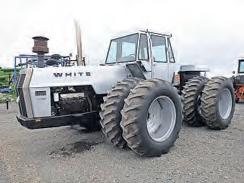
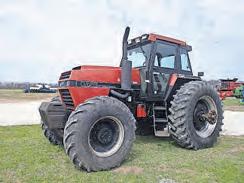
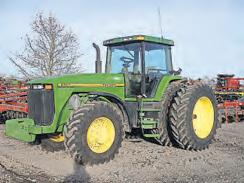

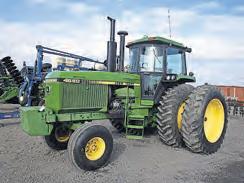
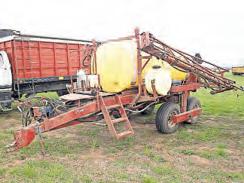
CIH MX285 TRACTOR, stk#4908, 4026hr, 2004, 4hyd, lg 1000PTO, auto steer, sharp!. . . . . . . . . . . . . . . . . . . . . . . . . . . . . . . . . . . . . .$75,500 NH T9020 TRACTOR, stk#6829, only 577hrs, 2010, 4hyd, 480/80R46 duals . . . . . . . . . . . . . . . . . . . . . . . . . . . . . . . . . . . .will accept trade JD 8400 TRACTOR, stk#6143, 4hyd, 420-30 front & 20.8-42 rear, front weights, quick coupler . . . . . . . . . . . . . . . . . . . . . . . . . . . . . . . . .$39,500 WHITE 5100 PLANTER, stk#6809, 8R-30”, SM3000 monitor, corn/bean/sorghum plates, manuals . . . . . . . . . . . . . . . . . . . . . . . .$5,950 CIH 5500 GRAIN DRILL, stk#6803, 30’, 15” bean planter . . . . . . . . . . . . . . . . . . . . . . . . .$8,950 GP 1230 PLANTER, stk#4987, 12R-30”, bean meters, NT, poly boxes, firmers, smart boxes . . . . . . . . . . . . . . . . . . . . . . . . . . . . . . .$9,950
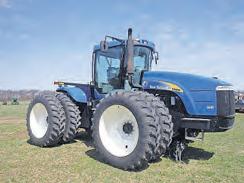
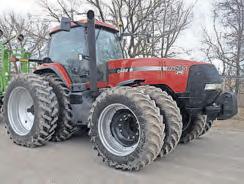
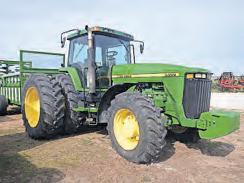
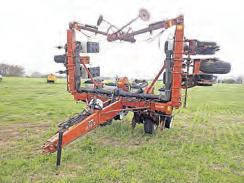
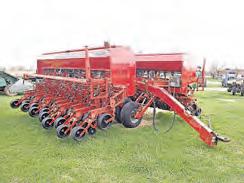
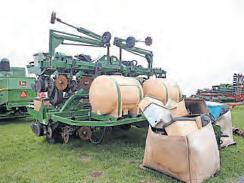
NI 5209 HAYBINE, stk#6855, 9’, good rolls, good knives, farmer retirement . . . . . . . . . . .$7,950 GP 1800TT VT, stk#6813, 2011, weight kit, rolling spike harrow, rolling basket, new blades . . . . . . . . . . . . . . . . . . . . . . . . . . . . . . . . . . .$19,500 NH 185 MANURE SPREADER, stk#6819, tandem axle, 540 PTO, good chains & sides . .$6,950 CIH 5100 GRAIN DRILL, stk#5846, grass, soybean special, press wheels . . . . . .$4,450
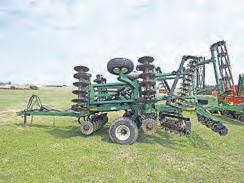
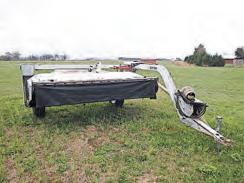



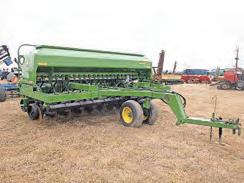
JD 1590 GRAIN DRILL, stk#6255, 15’, 7.5”sp, less than 800 total acres, beveled original blades . . . . . . . . . . . . . . . . . . . . . . . . . . . . . .$38,500 JD 750 DRILL, stk#5031, 7.5”sp, dolly, grass, markers, harrow, bevel on blades, always shedded. . . . . . . . . . . . . . . . . . . . . . .$19,500
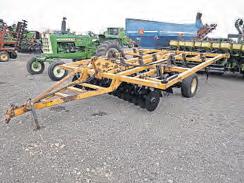
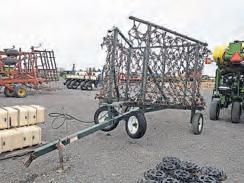

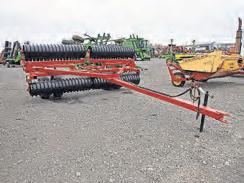

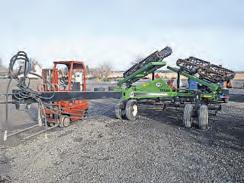
UNVERFERTH 110 CRUMBLER, stk#3006, 12’ main, drag bar, weld on left wing repaired properly . . . . . . . . . . . . . . . . . . . . . . . . . . . . . . .$4,950 J & M TF212 CRUMBLER, stk#5689, 2015, 26’, double twist, green, only worked 800 acres . . . . . . . . . . . . . . . . . . . . . . . . . . . . . .$12,500 DUNHAM LEHR 30’ PACKER, stk#5959, solid rolls, flat fold. . . . . . . . . . . . . . . . . . . . .$4,950 BRILLION WPW128 PACKER, stk#5048, 33’, vertical fold, scrapers, cast rolls, no welds . . . . . . . . . . . . . . . . . . . . . . . . . . . . . . .$7,950 FEURST 26’ CHAIN HARROW, stk#6821, good chains, 15” wheels . . . . . . . . . . . . . . . .$3,250 LANDOLL 875 SOIL FINISHER, stk#6443, 10’, walking tandems, spring shank, new front blades, 3 bar drag . . . . . . . . . . . . . . . . . . . . . .$5,250

